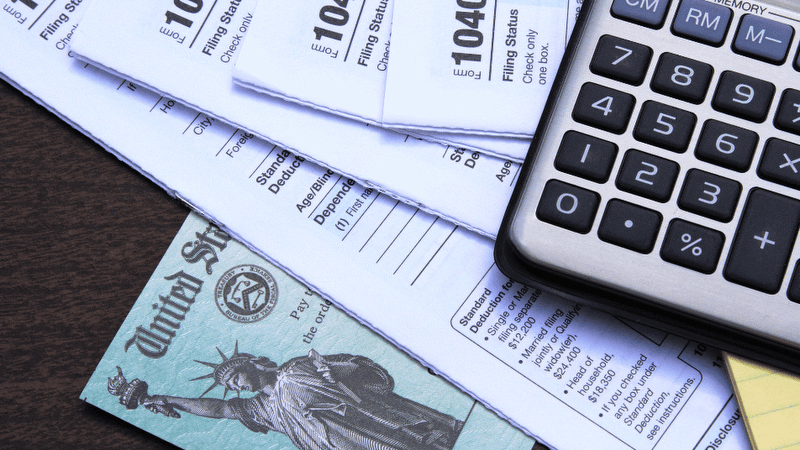3 Tips to Help Maximize Contributions to Your Self-Directed IRAs
When you are building your retirement nest egg, consistency is important. It's also important to take advantage of the maximum contribution allowed each year. Here are 3 tips to help you get started.
Posted on February 19, 2024

Perhaps the single most important factor to achieving success when it comes to building a large retirement nest egg is that you contribute to your retirement accounts consistently over many years and contribute as much as possible as you can each year. Gone are the days when you could rely on Social Security to support you in retirement. Now saving for retirement is firmly in your hands. Even if you don’t always do a great job at choosing your investments, you can still secure your financial future when you maximize contributions to your account.
While many employees contribute to their employer-sponsored retirement plan, such as a 401k, did you know you can also contribute to an Individual Retirement Account (IRA)? For the tax year 2023, individuals can contribute up to $6,500 per year to their Traditional or Roth IRA, with a $1,000 catch-up contribution for individuals ages 50 and over. (Yes, you can still contribute to your IRA for 2023 until the tax filing deadline.) For those of you who have already maximized your contributions for 2023, you can start saving for 2024, with a new higher annual limit of $7,000, or $8,000 for those 50 and older.
Tips to Help Maximize Contributions
Plan Ahead
Of course, the best way to put yourself in a position to make the maximum allowable contributions to your self-directed IRA is to plan ahead. This means incorporating your IRA contributions into your budget.
One of the most common reasons that individuals come up short with their annual contributions is that they take the approach of waiting until the end of the year to begin thinking about how to come up with their contributions or, worse yet, simply taking the approach that they'll contribute whatever money they have “left over” at the end of the year. You'll rarely be successful with this type of a passive savings approach.
Prioritize
Sometimes retirement savers are intimidated at the prospect of making a one-time, lump-sum contribution of $7,000 (or $8,000 if you're age 50 or over). But these amounts are simply the annual caps on contributions to your account. If it's a better fit for your budget and cash flow, you can choose to make either quarterly or monthly contributions. It's easier to contribute $500 each month, than $7,000 in one lump sum. If you are unable to maximize this year, just save what you can. By even allocating a small portion of each paycheck to your self-directed IRA, you are increasing your nest egg, and hopefully by planning ahead you can maximize your contribution the next year.
Note that these limits are cumulative annual amounts, so an individual with both types of IRAs can contribute a total of $7,000 to their accounts, not $7,000 to each account. If you choose to have multiple self-directed IRAs (and there are some very good reasons you may wish to do so), then plan accordingly.
Contribute Early
The earlier you can make contributions each tax year, the more time your money has to grow. It might not seem like much, but the small amount of earnings and/or growth you can gain from having an additional three, six or even 12 months every single tax year can really add up.
Furthermore, if you contribute some or all of your annual limit to your self-directed IRA in January or February of the particular tax year, then you don’t have to avoid any temptations to spend it on other things. Unlike a traditional savings or checking account, you can’t change your mind and withdraw funds from a self-directed IRA early – at least without having to pay a penalty in most cases.
Finally, saving early in the year, or throughout the year, will reaffirm a healthy savings habit and let you build on those good behaviors. Developing a plan to maximize your self-directed IRA contributions each year can carry over into other areas of personal finance, including saving for your children’s college education, saving for a down payment for a new home, or for any other long-term financial goals you may have.
Other Considerations
When deciding which type of IRA to contribute to, there are a few things you should consider. If you are looking for ways to lower your taxable income, a Traditional IRA may be the way to go. While there are no income limits to contribute to a Traditional IRA, there are phase-out ranges for the tax deduction based upon your Modified Adjusted Gross Income (MAGI). While a Roth IRA, does not give you a tax break upfront, it does allow you to take tax-free withdrawals when you hit retirement age as long as the account has been open for five years.
If you are looking for other ways to lower your taxable income, consider contributing to a Health Savings Account (HSA). HSAs have higher annual contribution limits (the maximum contribution for a family is $8300 for 2024) and contributions are tax deductible. An HSA is a great way to save for healthcare costs, can also be self-directed, and at age 65 you can take distributions for any reason without penalty.
By starting your retirement planning early and maximizing your annual contributions, you'll be in the best position to reach your retirement goals. If you don't know how much retirement savings you'll need to comfortably retire, talk to your financial advisor who can evaluate your individual situation. Once you miss the opportunity to make an IRA contribution for a given tax year, you can't go back later and make up for it. Your annual IRA contributions are the ultimate “use it or lose it” situation. So if you haven't made your contribution for last tax year, it's not too late, and it's not too early to start making contributions for the current tax year.
If you are interested in learning more about opening a self-directed Traditional or Roth IRA, schedule a 1 on 1 consultation with a Quest IRA Specialist.








